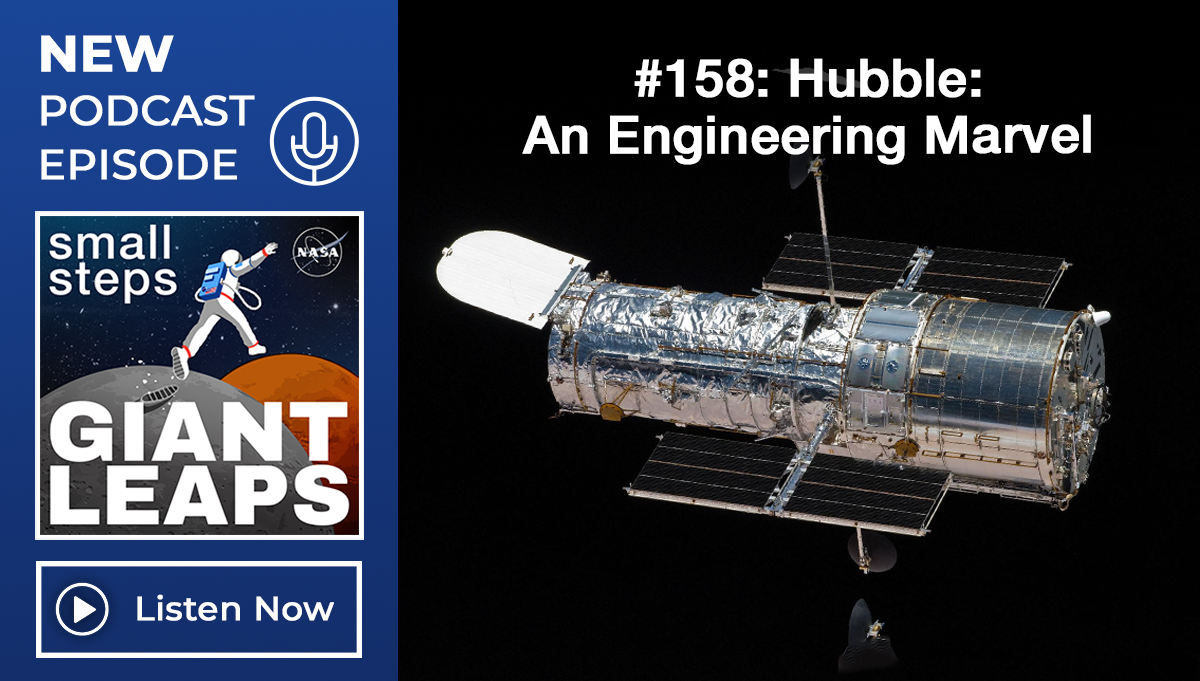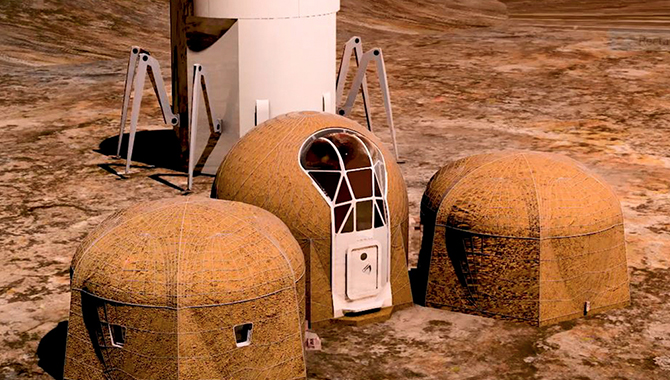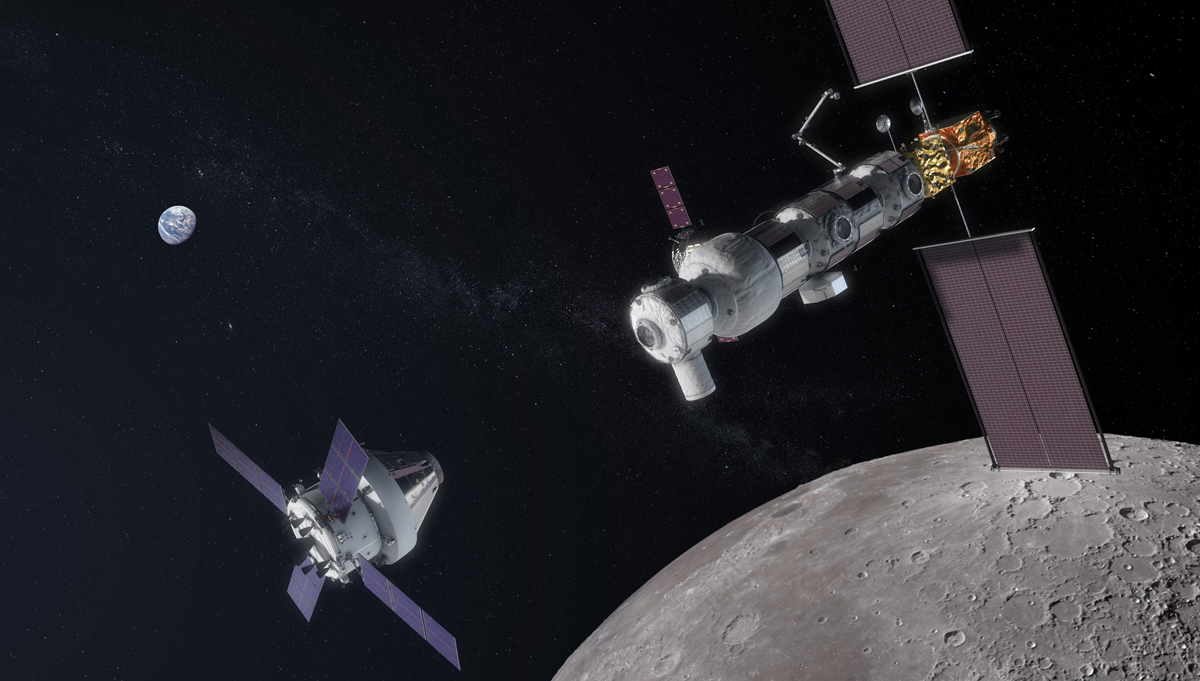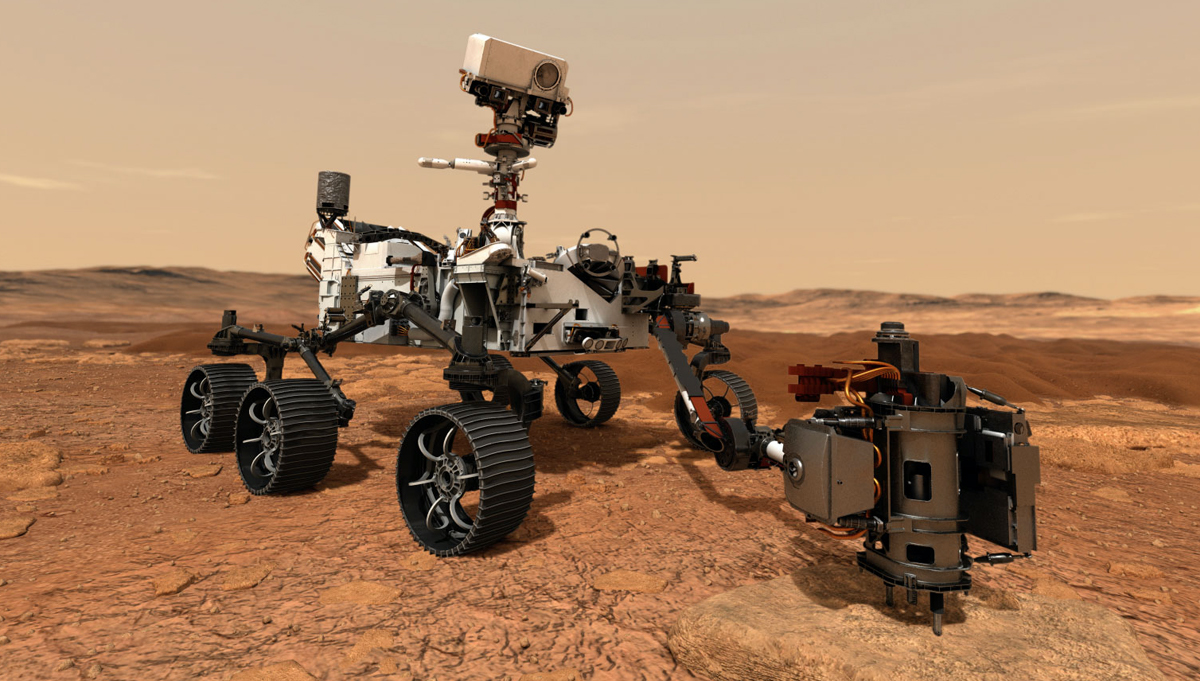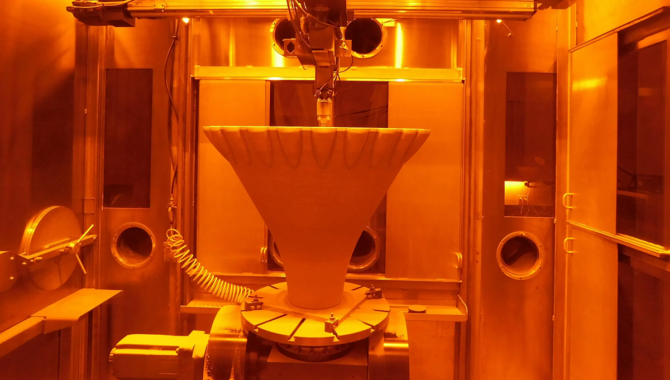
A 3D printer at a facility of NASA partner RPM Innovations additively manufactures a large-scale aerospike rocket engine nozzle using one of Elementum 3D’s specialized, 3D-printable aluminum alloys.
Credit: RPM Innovations Inc.
Spinoff publication highlights innovations for space that improve everyday life for millions.
On the night of December 7, 1972, the sky over Florida’s Space Coast lit up with fire and a peculiar thunder as Apollo 17—the last of its kind—lifted off for the Moon. It was the first night launch of the Apollo era, and the ground shook as the 36-story tall rocket moved to break free from Earth’s gravity. Crowds stood in awed silence, watching as the spacecraft ascended, climbed higher, arced away and faded into the night sky.
As astronauts Eugene A. Cernan, Harrison H. Schmitt, and Ronald E. Evans left Earth behind, a growing number of Americans had already grown skeptical about the cost of space exploration. When questioned by pollsters, they would say that solving problems on Earth should come first. What few realized at the time, however, was that the very technology NASA developed for Apollo would soon reshape life on Earth—revolutionizing medicine, energy, communication, transportation, and countless other fields in ways no one could have predicted.
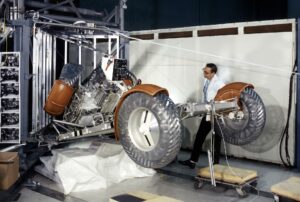
This photograph was taken during a deployment simulation of the Lunar Roving Vehicle (LRV). Credit: NASA
Apollo 17 carried NASA advancements in digital imaging equipment to capture high-resolution photographs of the Moon. This technology later played a pivotal role in the evolution of new medical imaging systems, such as CT scans and MRIs, which have transformed healthcare diagnostics. The lightweight, high-capacity batteries that powered the Lunar Roving Vehicle laid the groundwork for the modern units now essential in portable tools and electric vehicles. Meanwhile, the high-performance insulation that shielded astronauts from the Moon’s extreme temperatures has found a new purpose on Earth, enhancing home insulation, emergency blankets, and thermal protective gear for firefighters.
Over more than six decades, the technologies NASA has developed to advance aeronautics and space exploration have consistently led to innovations that improve life on Earth. Advanced water purification technology that supports astronauts on long-duration spaceflights is now providing clean, safe drinking water in rural areas and in areas impacted by disasters. Remote monitoring devices developed to track the health of astronauts in space are now critical tools in hospitals and homes, enabling centralized, real-time monitoring of multiple patients, improving care and outcomes.
Recently NASA published Spinoff 2025, a new issue of the annual publication that details some of the most interesting examples of space technologies that have been adapted to improve everyday life on Earth. This issue includes an impressive array of companies using NASA-pioneered technologies to improve life on Earth, including Brand Labs USA, headquartered in Fort Lauderdale, Florida, which uses a NASA-developed technology known as the Rotary Cell Culture System (RCCS) to grow robust plant stems cells for skin-treatment products.
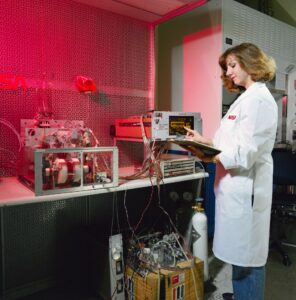
JSC technician Tacey Prewitt checks the progress on a bioreactor experiment in JSC’s Life Sciences Laboratory Bldg 37 biotechnology laboratory. Credit: NASA
Researchers at NASA’s Johnson Space Center developed the RCCS to continue their microgravity research while the Space Shuttle program was paused during the Challenger accident investigation. A rotating chamber filled with a nutrient-rich growth medium suspends cells in fluid. The chamber rotates, counteracting the effects of gravity, creating a low-turbulence, low-shear environment that prevents cells from settling and mimics the conditions of microgravity in space.
Originally designed to cultivate human kidney cells, the technology has since been widely adopted for drug development and stem cell research, contributing to treatments for cancer, diabetes, and other diseases. Recently, dermatology applications are being explored.
By growing plant stem cells in RCCS bioreactors, the company produces nutrient-rich solutions filled with growth factors, amino acids, and moisturizing compounds that enhance skin health. The technology has also shown promise in addressing epidermolysis bullosa—a rare, genetic skin condition that causes large, painful blisters. The disease usually appears in infancy and can be fatal. The company, partnering with a nonprofit, is using RCCS to extract a form of sulforaphane from broccoli. “It has actually been healing the blistering of the skin that literally will kill these kids at a young age,” said David Pollock, president and CEO of Brand Labs, noting that this extract could eventually serve as the foundation for an approved drug to treat the disease.
Another highlight in Spinoff 2025, is work at NASA’s Marshall Space Flight Center to develop a weldable, heat-resistant aluminum alloy for use in lightweight, high-strength components for rocket engines. Aluminum’s low density makes it ideal for high-strength, lightweight components, but its tendency to crack during welding and low heat tolerance have historically limited its use in additive manufacturing for rocket engines.

Thin as it is, the wall of this 3D printed aluminum rocket engine nozzle is actually hollow, filled with tiny channels that the cryogenic fuel flows through to cool the nozzle. Credit: NASA
A partnership between NASA and Elementum 3D, a company based in Erie, Colorado, led to the development of A6061-RAM2, aluminum alloy powder infused with particles of other materials to alter the metal’s properties and make it weldable, and printable, while maintaining exceptional strength. NASA successfully tested the material in a rocket nozzle manufactured by commercial partner, RPM Innovations, in Rapid City, South Dakota in 2023.
Even as NASA works to harness this technology to send more cargo deeper into space using less fuel, other industries have quickly embraced it, driving innovation across multiple fields. Microchip manufacturers use it to enhance components exposed to caustic materials, while Formula 1 teams replace heavy steel parts with lightweight aluminum. Automakers are printing heat-resistant brake rotors, and lighting companies are leveraging the process for durable, high-performance fixtures with intricate designs.
To learn more about NASA’s spinoff technology and how it benefits life on Earth, click here.




